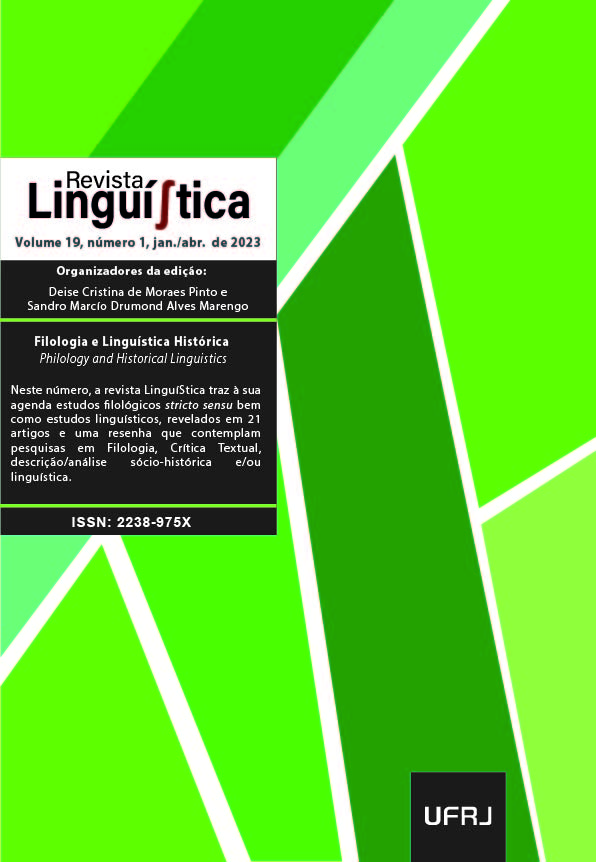Catchword: between Codicology and Paleography
DOI:
https://doi.org/10.31513/linguistica.2023.v19n1a57283Keywords:
catchwords, Codicology, Paleography, 17th century manuscripts, classification on categories.Abstract
The catchword, defined as a group of letters or words written at the lower margin of the folio, and repeated at the beginning of the next folio, in order to indicate the sequence of the quires or manuscript folios themselves, has been studied by Codicology, as an element with informative value on the reconstitution of the codex or the manuscript to dating documents. However, as configuring a written resource, studies about the catchword are intertwined with the methods of Paleography. In this study, we aim the analysis of its shape and frequency in 17th century documents of the captaincy of Minas Gerais, to classify the catchwords from categories established according to the shapes as they are shown up in the text. The analysis’ result identifies the choice by the scribe for the use of the type "word" at the end of the folio, comparing to the use of syllables and abbreviations, for instance, transferring to the catchword a concern with the agility on reading. We propose that the data obtained from the results of this study be inserted in a database that gathers information about manuscript practices in documents from several types and centuries, in Portuguese language, created in Brazil, to be analyzed by the methodologies of Codicology and Paleography to the identification, quantification and analysis of trends of uses and means in the production of codices or single manuscripts, in order to compose a view on these historical-cultural phenomena.Downloads
Published
Issue
Section
License
Copyright (c) 2023 Revista Linguí∫tica

This work is licensed under a Creative Commons Attribution-NonCommercial 4.0 International License.
Authors who publish in the Revista Linguí∫tica agree with the following terms:
The authors maintain their rights, ceding to the journal the right to first publication of the article, simultaneously submitted to a Creative Commons license permitting the sharing with third-parties of published content as long as it mentions the author and its first publication in the Revista Linguí∫tica.
Authors may enter into additional agreements for the non-exclusive distribution of their published work (for example, posting in online institutional or non-profit repositories, or book chapters) so long as they acknowledge its initial publication in the Revista Linguí∫tica.

The journal Revista Linguí∫tica is published by the Post-Graduate program in Linguistics of UFRJ and employs a Creative Commons - Attribution-NonCommercial 4.0 International (CC-BY-NC).









